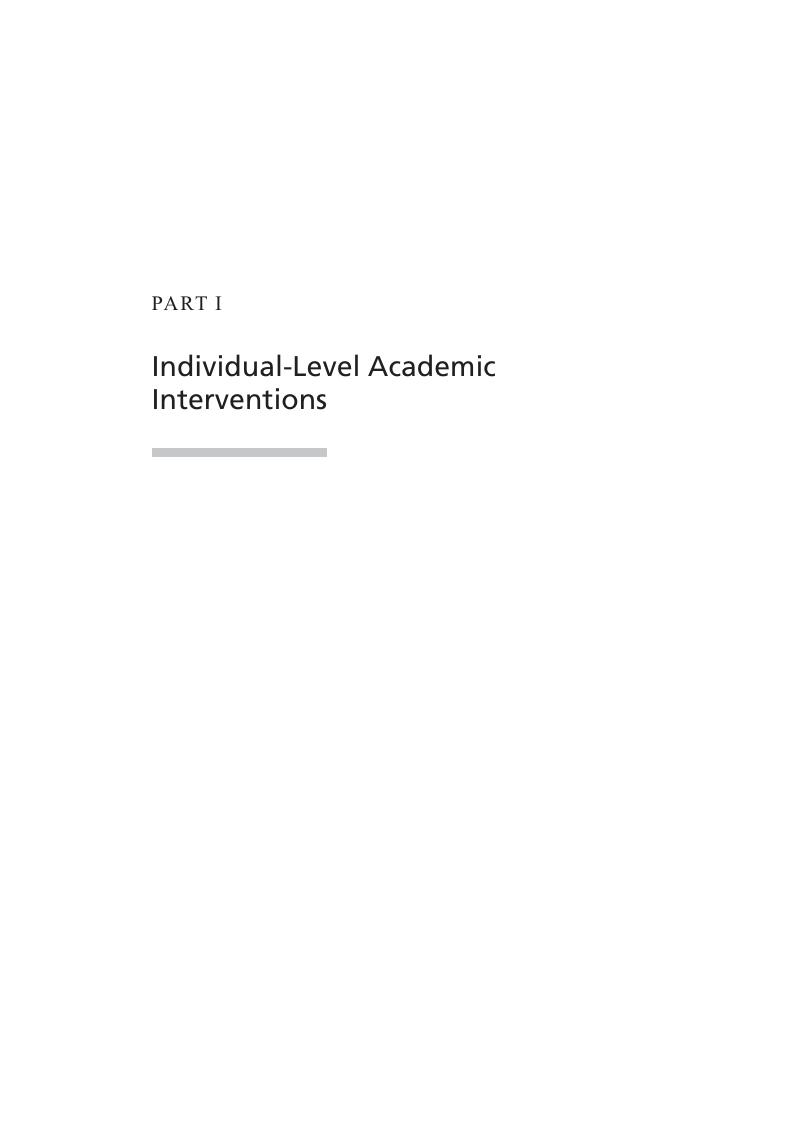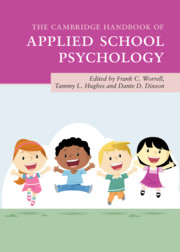Book contents
- The Cambridge Handbook of Applied School Psychology
- The Cambridge Handbook of Applied School Psychology
- Copyright page
- Contents
- Contributors
- Contributor Biographies
- Acknowledgments
- 1 Broadening the Focus of School Psychology Practice
- Part I Individual-Level Academic Interventions
- Part II Teacher- and System-Level Interventions
- Part III Interventions from Educational and Social/Personality Psychology
- Part IV Behavioral and Social-Emotional Interventions
- Part V Health and Pediatric Interventions
- Part VI Family Connections and Life Transitions
- Part VII Special Populations
- Part VIII Conclusion
- Index
- References
Part I - Individual-Level Academic Interventions
Published online by Cambridge University Press: 18 September 2020
- The Cambridge Handbook of Applied School Psychology
- The Cambridge Handbook of Applied School Psychology
- Copyright page
- Contents
- Contributors
- Contributor Biographies
- Acknowledgments
- 1 Broadening the Focus of School Psychology Practice
- Part I Individual-Level Academic Interventions
- Part II Teacher- and System-Level Interventions
- Part III Interventions from Educational and Social/Personality Psychology
- Part IV Behavioral and Social-Emotional Interventions
- Part V Health and Pediatric Interventions
- Part VI Family Connections and Life Transitions
- Part VII Special Populations
- Part VIII Conclusion
- Index
- References
Summary

- Type
- Chapter
- Information
- The Cambridge Handbook of Applied School Psychology , pp. 9 - 82Publisher: Cambridge University PressPrint publication year: 2020
References
References
Enhancing Performance on In-Class Math Assignments
This article describes how classwide bonus rewards were applied in a special education classroom for middle school students with emotional/behavioral problems. In this study they increased in class math, spelling, and language arts performance.
This article describes how classwide bonus rewards were applied in a general education 1st grade classroom to increase percentage correct in class math assignments.
Enhancing Performance on Math Homework
This article describes how classwide bonus rewards were used to enhance math homework performance in four 4th-grade classrooms.
This article describes how classwide bonus rewards were applied in an 8th grade class to enhance homework assignment performance. The class included 17 students, with 10 students receiving special education services.



